Trip Overview
Discover the breathtaking adventure of Mera Peak Climbing, Nepal’s highest trekking peak, nestled in the stunning Makalu Barun National Park in the Khumbu Himalayan Range. This exhilarating journey takes you through a landscape inhabited by endangered wildlife and surrounded by iconic peaks like Mt. Everest, Lhotse, Cho-Oyu, and Makalu.
Mera Peak requiring some mountaineering experience and physical fitness. Our professionally designed itinerary includes acclimatization and spare days to ensure a safe and enjoyable climb. Before ascending, our expert climbing guides will provide a short lecture on using climbing equipment and the technical aspects of climbing.
Itinerary Overview
- Scenic Flight to Lukla: Your Mera Peak Climbing adventure begins with a breathtaking flight to Lukla, offering stunning aerial views of the Himalayas.
- Trek to Chutok La Pass: From Lukla, trek to Chutok La Pass, passing through picturesque landscapes.
- Rivers and Suspension Bridges: Along the way, cross serene rivers and suspension bridges that add to the adventure.
- Charming Villages and Ancient Stupas: Experience the local culture by visiting charming villages and ancient stupas.
- Blue Pine Forests and Rhododendron Trees: Traverse through lush blue pine forests and vibrant rhododendron trees.
- Picturesque Meadowlands: Descend into beautiful meadowlands, perfect for capturing stunning photographs.
- Mera Peak Base Camp: Arrive at the base camp and prepare for the climb with awe-inspiring views of towering mountains above 7000m.
The Climb
From the base camp, embark on the challenging ascent to Mera Peak. Enjoy panoramic views of some of the world’s highest mountains, making the climb an unforgettable experience.
Why Choose Us?
Our expert team ensures your safety and success with:
- Professional Guides: Receive guidance and support from experienced climbing guides.
- Acclimatization Days: Our itinerary includes days for acclimatization to help you adjust to the altitude.
- Technical Training: Get a short lecture on using climbing equipment and technical climbing aspects.
Tour Highlight
- Expereice of landing and taking off in Lukla airport
- Kathmandu City Tour
- Step inside and experience life as the “mountain people” live, in the heart of Himalayas.
- Remarkable views of Icefall. -Summit to Mera peak at the elevation of 6654 meters.
Trip Facts
Trip Itinerary Expand All
Arrival at Tribhuwan International Airport
Welcome to Nepal! We will receive you the airport and transport you to hotel.
Pre-trip meeting and sightseeing around Kathmandu valley
The day beings with a meeting and introducing with your trek and tour leader. After breakfast, we organize a short meeting at the hotel lobby. The meeting finalizes the preparation of the trek. In the meeting, you need to bring three copies of passport copy size photos, and travel insurance copy. Soon, the day tour will starts and on the tour visit most highlighted places of Kathmandu.
PASHUPATINATH TEMPLE
Pashupatinath Temple is one of the most visited and sacred places of Hindu. According to Hindu mythology, Pashupatinath is one of four Dham. It is not only a religious place also the cremation place. The dead body is burning with firewood in the bank of holy river Bagmati.
BOUDDHA STUPA
Bouddhanath Stupa is one of the biggest Buddhist shrines in the world. While touring in Buddha you can meet the monks, learn Buddhism, gather the information about Thankas, and its significants.
BHAKTAPUR DURBAR SQUARE
Bhaktapur Durbar Square is a royal palace built in centuries ago when Nepal had 22 and 24 state kingdom. The palace is famous with the name of fifty-five windows durbar, Nyatapol Mandir the tallest temple in Nepal. The Lion Gate, Golden Gates, The statue of King BhupatindraMalla and the pottery where the potter makes are the main attractions of Bhaktapur.
After finished the tour, the evening time is to review the luggage for the trek. If you interested you can walk around Thamel, choose the restaurant for dinner.
Fly to Lukla and trek to Chuthanga
Early morning get up and prepare for the trek. After having breakfast in the hotel, the trek guide will meet you and take you to the airport to fly to Lukla. The 35 minutes scenic flight takes you the Tenzing-Hillary airport. Upon your arrival, the guide will introduce the porters/staffs of your trekking and heads to Chutanga, which takes three hours walking from Lukla.
Trek to Zatrabok-4,704m via Zatrawala Pass (4,610m)
We cross Kari La pass, after which the trail goes along mountainsides through the Khari Khola valley and reach Pangkongma.
Trek to Khote (3800m),
After having delicious breakfast in camp, we start walking on rocky and barren landscapes, which gives stunning views of mountain summits, and the wooded region below the trail and finally reached Khote.
Trek to Thangnak (4600m),
Morning: Begin your trek early, leaving from your previous night’s camp. The trail gradually ascends, offering stunning views of the surrounding peaks and glaciers. Ensure you’re well-hydrated and take regular breaks to acclimatize to the increasing altitude.
Afternoon: Arrive at Thangnak, a serene spot surrounded by towering peaks. After lunch, explore the area, which serves as a great acclimatization opportunity.
Evening: Overnight at a lodge in Thangnak. Enjoy the camaraderie of fellow trekkers and share experiences over dinner.
Trek to Khare (5000m),
Morning: After breakfast, set off towards Khare, the trek becoming more challenging as you navigate through moraines and rocky paths. The stunning landscapes provide a perfect backdrop for introspection and appreciation of the high Himalayas.
Afternoon: Reach Khare by early afternoon. This settlement offers basic amenities for trekkers gearing up for the climb ahead.
Evening: Rest and prepare your gear for the upcoming acclimatization day. Overnight in Khare
Rest at Khare for acclimatization
Daytime: Use this day for acclimatization. Engage in short hikes around Khare to adjust to the altitude. Your guides may provide valuable climbing techniques and safety briefings for the ascent.
Evening: Early to bed for the next day’s challenging trek to Mera High Camp.
Trek to Mera high camp (5780m).
Morning to Afternoon: Begin the trek to Mera High Camp. This part of the journey involves navigating through crevassed glaciers, requiring the use of ropes, crampons, and ice axes. The climb is strenuous but rewarding, with panoramic views of the Himalayan vista.
Evening: Set up camp at Mera High Camp. Prepare your equipment and mindset for the early morning summit attempt. Rest early, as the next day starts well before dawn.
Summit to Mera peak (6470meters) and then return to Khare (4900meters)
Pre-Dawn: Start your ascent to the summit of Mera Peak. It’s a challenging climb, but the sunrise views from the summit are unparalleled. After celebrating your achievement and taking photographs, begin your descent.
Midday: Return to High Camp, collect your belongings, and continue down to Khare. It’s a long and tiring day, but the sense of accomplishment is immense.
Evening: Back in Khare, rest and recover from the day’s exertions. Overnight in Khare.
Spare day in case of bad weather
Daytime: This spare day is a buffer in case of bad weather preventing your summit attempt. If unused, it’s an opportunity for further exploration or rest in Khare.
Trek to Khote
Morning to Afternoon: Begin your descent to Khote, retracing your steps through the stunning landscapes that have become familiar. The descent is considerably faster than the ascent, allowing for reflection on your recent accomplishments.
Evening: Arrive in Khote and spend the night in a local lodge. Enjoy the warmer climate and a well-deserved rest.
Trek to Thuli Kharka(4200 m)
Morning to Afternoon: Continue your descent to Thuli Kharka. The path takes you through rhododendron forests and offers a last glimpse of the high mountains behind you.
Evening: Reach Thuli Kharka and prepare for the final leg of your journey back to civilization. Overnight in Thuli Kharka, celebrating the successful completion of your trek.
Trek to Lukla (2840 meters)
Finally reach Lukla, from where the expedition was started. In the evening we celebrate successful climb of Mera Peak, definitely an adventure of a lifetime.
Morning flight to Kathmandu from Lukla
This morning you will flight out from Lukla to Kathmandu, and upon arrival your guide transfers you to the hotel. A good rest after a long trek will be crucial. In the evening, you have leisure time to stroll around Thamel and do any souvenir shopping if you like. In the evening you will be served a farewell dinner in typical Nepali Restaurant with Nepali folk music and dance. It is also the time of reviewing the trip with your guide
Transfer to the airport for your final flight departure
The trip concludes today. Your guide will drop you off at the international airport for your departure back home.
Itinerary Informations
The provided itinerary is standard, and if you want to customize it, you can do it. OR you can also go through our Plan Your Holidays page.
Lukla flight from Manthali Airport, Ramechhap:
Due to the air traffic in Kathmandu during the peak months (March, April, May, September, October, and November), CAAN has promulgated the notice that the flight has been shifted to Manthali from Kathmandu to Lukla. If there are changes will update you ASAP.
Lukla Flights:
All we know is that the Lukla flight is sensitive in the case of weather. Instantly it may be delayed and canceled as well. A tiny Himalayan airport has difficulty facing heavy traffic which is why sometimes the flight may be delayed. So, we suggest, trekking in Everest, please make sure at least you have two days additional in the program. In the case of a weather cancellation, the best alternative to get Lukla is to charter a helicopter because the copter can fly in lower visibility of 1,500 meters. However, Twin Otter and Dornier aircraft need minimum visibility of 5,000 meters.
What about the Helicopter cost? Is it getting instant or need to be in the queue?
A helicopter charges US $ 2500 per flight to Lukla from Kathmandu. And the US $ 500 per person on a sharing basis. Except for the emergency, during the high season and extreme weather of Lukla, you may not get a helicopter instantly or need to be in the queue. Also, if you have requested the Helicopter for less than 24hrs, you may need to wait because of the limited number of helicopters, and they’re using various activities in the mountains.
What Includes & Excludes
Includes
Accommodation
- Three Nights in Kathmandu and Eleven nights in the mountain
- One or two nights in a tented camp for peak climbing
Flight
- Kathmandu-Lukla-Kathmandu domestic airfare
Guides and Porters
- Trekking Porters – We Assign a porter for each two trekkers.
- An English speaking local trekking guide
- An English speaking local (Sherpa) climbing guide
Meals
- Three meals (Breakfast, Lunch, and Dinner) during the trek.
Transports
- All ground transportation as per itinerary (Kathmandu Ramechhpa round trip is in sharing vehicle)
Additional Services
- All government taxes and official expenses.
- Farewell dinner one night before the client’s final departure in a typical Nepali Restaurant with culture dance. Your guide will accompany you.
- Trekking/tour permits, entrance fees.
- Accommodation, foods, insurance, salary, equipment, and medicine for field staffs.
Excludes
- All drinks including bottled/boiled water along the trekking route
- Anything not mentioned in the price includes.
- International airfare to and from Nepal.
- Lunch and dinner in the city.
- Tips for trekking staff (Tipping is expected).
- Visa fees and travel insurance.
Join the Departure
Join the departures 
Guest Reviews
We highly recommend Broad Adventures they provided exceptional guidance on our Everest Base Camp trek. Our guide’s Gynau’s professionalism,...
Read More...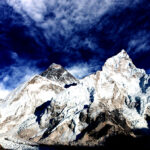
David Neufeld
CanadaIf you are looking for a tour to see the Mt Everest base camp look no further. I have...
Read More...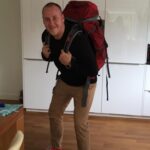
Tim Troost
AustraliaI was looking at an exotic trek adventure. After looking for a bunch of places to go I thought...
Read More...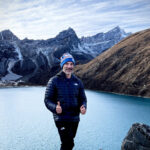
Keith B.
USAKeshab was our most gracious and amiable guide in Kathmandu and to Everest basecamp. My wife accompanied me on...
Read More...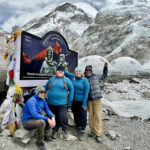
Ken Byers , Nevada
USAMy son and I went for trekking in Nepal in 2009, and we were lucky to have Keshab Khanal...
Read More...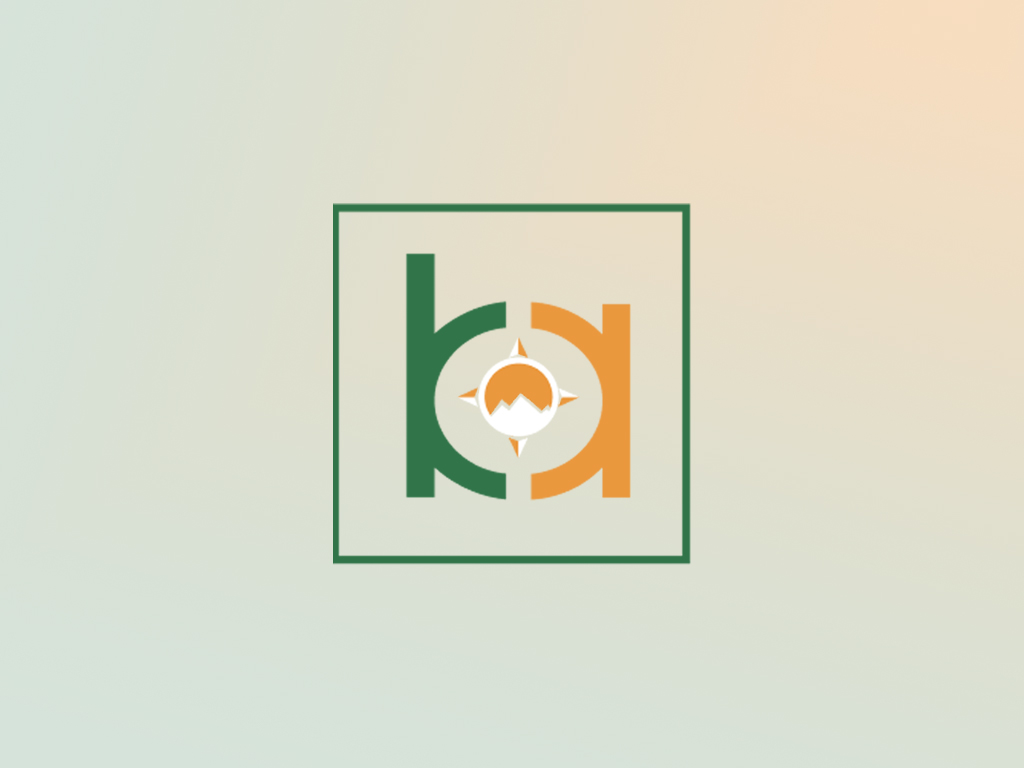
Dr. Raphael Hemmendinger
Jerusalem , IsraelIn 2005 I came to Nepal for the second time, this time whith a very specific queste. I wanted...
Read More...
Richard Rijken
Amsterdam , NetherlandsI was always willing to go to the Himalayas and explore some of the beauties hidden in the sacred...
Read More...
John Peter
Manchester , United KingdomNamaste! This was my first time to Nepal, and I had an amazing time on my trek. From the...
Read More...
David Patrician
Hamburg , GermanyI was on trekking from 24.10.10 to 5.11.10 in the half part of Annapurna circuit from Bhulbhule to Jomsom....
Read More...
Vaya Bairaba
Athens , GreeceImportant Info
Lukla Flights:
Lukla flights are highly sensitive to weather, often leading to delays or cancellations. The small Himalayan airport faces heavy traffic, causing additional delays. We recommend adding at least two extra days to your Everest trekking schedule. In case of weather cancellations, consider chartering a helicopter, which can operate in lower visibility (1,500 meters) compared to Twin Otter and Dornier aircraft (5,000 meters).
Helicopter Costs: $2,500 per flight from Kathmandu to Lukla or $500 per person on a shared flight. During high season or extreme weather, helicopters may not be instantly available and might require waiting in a queue. Booking less than 24 hours in advance may also cause delays due to limited availability.
Travel Insurance and Covers
Ensure your travel insurance covers:
Adventure activities above 15,000 feet
Flight delays/cancellations due to bad weather
Accidents and evacuations
Keep in Mind
Unexpected weather changes, natural disasters, flight delays, cancellations, government rules, local political situations, and health conditions may alter your itinerary. Our guide will try to minimize impacts, but we are not liable for additional costs.
Always options for Upgrade
Upgrade options are available for:
Accommodation: 5-star hotel accommodations
Transportation: Private car/jeep services
Flights: Domestic flights and helicopter charters
Get Trip PDF file
Why travel with
Broad Adventures
Since 2010, we have curated unique itineraries that offer once-in-a-lifetime experiences, ensuring every trip is filled with joy and adventure. Our focus on the fun factor and the right amount of challenge allows you to achieve a profound sense of personal accomplishment, all while enjoying the camaraderie of like-minded travelers.
Small-Group Adventures
Join an intimate group of like-minded travelers who share your passion for discovering the world's wonders safely and confidently. Our small group settings foster a deeper connection with your fellow explorers and the incredible destinations we visit.
Expert Local Guides
We exclusively employ local guides and porters for their unparalleled knowledge and expertise. Their insights and firsthand experiences enrich your journey, giving you a deeper understanding and appreciation of the local culture, history, and environment.
Responsible for Tourism
Your safety is our utmost priority. Our dedicated team of trained professionals ensures the highest standards of care, including providing fresh and hygienic meals, comprehensive First Aid supplies, and round-the-clock communication services. We are committed to responsible tourism practices, emphasizing the importance of sustainable and ethical travel.
Health and Saftey
Promoting responsible tourism is essential, as it calls for a collective effort from everyone involved in the industry. By prioritizing health and safety, we ensure that each journey is not only enjoyable but also respectful of the destinations and communities we visit.
How can we help you?
- City Tour Equipment
- City Tour Season
- Climbing Equipment
- Climbing Season
- General Questions
- Guide and Staffs
- Nepal Overview
- Tipping
- Transportations
- Trekking Equipment
- Trekking Season
- VISA info
- Weather and Temperature
Do you provide any equipment for the trek?
Broad Adventure provides you a basic equipment like a Sleeping Bag and a down Jacket, for the tea-house trek. And for the climbing trip, we provide the basic equipment. For a camping trek check it once including the section.
What is the time zone of Nepal?
NPT (UTC+05:45)
What cultural attractions can I explore in Kathmandu?
Kathmandu is home to historical sites like Durbar Square, Swayambhunath (Monkey Temple), and Pashupatinath Temple. These landmarks showcase Nepal’s rich cultural and religious heritage, providing visitors with a deep insight into the country’s history.
What are the must-visit cities in Nepal?
Kathmandu, Pokhara, Bhaktapur, and Patan are popular cities offering rich cultural experiences. Each city has its own unique charm, historical sites, and vibrant local markets.
Do you provide any equipment for the trek?
Broad Adventure provides you a basic equipment like a Sleeping Bag and a down Jacket, for the tea-house trek. And for the climbing trip, we provide the basic equipment. For a camping trek check it once including the section.
Do I need to tip the guide and porters? What is the standard tip?
Tips is expected by your team members and normally the standard is 10% of your total trip cost.
What is the climbing season in Nepal?
The main climbing seasons are spring (April to May) and autumn (September to November). During these times, the weather is more stable, providing safer and more favorable conditions for climbing expeditions.
Are there other mountains in Nepal suitable for climbing?
Yes, Nepal is home to numerous trekking peaks and mountains suitable for climbing, such as Island Peak, Mera Peak, and Lobuche East. These peaks offer a challenging yet rewarding experience for climbers of various skill levels.
Can I climb Mount Everest as a tourist?
Climbing Mount Everest requires significant preparation, experience, and permits. Most climbers join organized expeditions with experienced guides. Climbing Everest is a serious undertaking that demands physical fitness, technical skills, and a high level of commitment.
Do I need to tip the guide and porters? What is the standard tip?
Tips is expected by your team members and normally the standard is 10% of your total trip cost.
What is the voltage and plug type used in Nepal?
The standard voltage is 230V, and the plug type is the Europlug (Type C) and the British-style plug (Type D). It’s advisable to bring adapters if necessary.
What is the voltage and plug type used in Nepal?
The standard voltage is 230V, and the plug type is the Europlug (Type C) and the British-style plug (Type D). It’s advisable to bring adapters if necessary.
Is it necessary to get travel insurance for Nepal?
Yes, travel insurance is highly recommended, especially for trekking and adventure activities. Ensure that your insurance covers medical emergencies, evacuation, and trip cancellations.
What languages are spoken in Nepal?
The official language is Nepali, but English is widely understood in tourist areas. Additionally, various ethnic groups have their own languages.
What is the currency used in Nepal, and are credit cards widely accepted?
The official currency is the Nepalese Rupee (NPR). While major cities and tourist areas accept credit cards, it’s advisable to carry cash in remote areas. ATMs are available in urban centers.
How can I get around within cities in Nepal?
Transportation options include taxis, rickshaws, and local buses. Walking is also a great way to explore the cities, especially in the old quarters. Many cities have well-preserved historic areas, and navigating them on foot allows for a more immersive experience.
What cultural attractions can I explore in Kathmandu?
Kathmandu is home to historical sites like Durbar Square, Swayambhunath (Monkey Temple), and Pashupatinath Temple. These landmarks showcase Nepal’s rich cultural and religious heritage, providing visitors with a deep insight into the country’s history.
Can I climb Mount Everest as a tourist?
Climbing Mount Everest requires significant preparation, experience, and permits. Most climbers join organized expeditions with experienced guides. Climbing Everest is a serious undertaking that demands physical fitness, technical skills, and a high level of commitment.
Are permits required for trekking in Nepal?
Yes, trekking permits are required for most trekking regions. The type of permit depends on the specific trekking area. It’s important to obtain the necessary permits from the respective authorities to support local conservation and management efforts.
When is the best season for treks in Nepal?
From March to mid-June and September to December is the best season for treks.
What is the fitness required for the treks?
Generally, to trek in Nepal we should have good physical and health conditions. And also able to walk 4- 7 hours in day at a high altitude with your little backpack.
Do you pick me up at the Airport upon my arrival?
Yes, our airport representative welcomes you at the airport and transfers you to the hotel in a private tourist vehicle.
Does my guide/porter speak English?
They speak English. All the guides are professional and due to their professionalism, they speak good English. The guide’s English is enough to explain the local culture, activities, and religions.
Are the treks and tours secured? What about the security?
Providing security to our clients is our principal. The government-licensed holder guides and other crew members are carefully assigned for your trip. Even though, would like to counsel you to take care of your equipment, and bags. If you doing a tea-house trek your accommodation is in a local guesthouse, where you have to be a precaution yourself at all times. And if you are on a camping trek always keep your bags inside the tent and while at nighttime please keep your bag in the middle of the tent. The camping leader assigns a Sherpa as a guard throughout the nighttime.
What sort of ground transportation do you use?
Normally we assign a car for up to 2 people and a Jeep for up to 5 people and then a bus for up to 14 PAX and Coster and Sutlej Bus depending on group size. There are some trekking routes, which are dirt roads for them we assign 4WD Jeeps. It also depends on what services you opt for.
Are the staff insured by your company?
Yes, all of the staff and crew members are insured.
Should I need to join the group?
Joining a group depends on your booking and the option that you choose. If you have booked for Private Trip then obviously you will not join. Otherwise, normally the same trip departs on the same day then the group will join.
Do you arrange a private trip?
Yes, of course, we will arrange a private tour.
How big is a group size?
We will try to arrange a small group of willing people, which immortalize the treks. Normally we encompass 12 -16 people in a group. (This is not to apply to those who want to do a Private Trip, no minimum and maximum for them.)
Is the drinking water okay? Or do I need to use tablets?
For drinking water you can buy bottled water and purified mineral water on tea-house treks and city tours. And in the camping trek, the camping cook provides you with boiled water. For some cases of remote area trekking it would be better to have some purification tablets that you can buy in Kathmandu.
What are the accommodations and meals like?
All the meals that you provided are hygienic and fresh. While you are on a camping trek you get meals prepared by a professional camping cook. And if you are doing a tea-house trek you will get the main course as like in the cities. For accommodation on the camping trek, you will have a tent with good-quality mattresses and a sleeping bag. And if you are on a tea-house trek you will normal twin-sharing room with basic facilities with a warm mattress and blanket, and also we provide a sleeping bag if you need it.
Is the shower facility during the tour/trek?
Yes, you can have a shower during the trek. In the camping trek, you will get a shower in a shower tent which is provided 3-4 times in the whole trek, depending on the duration of the trek. And in a tea-house trek, we will provide you attached room where possible and for the rest of town, you will pay for a shower.
Do you provide any equipment for the trek?
Broad Adventure provides you a basic equipment like a Sleeping Bag and a down Jacket, for the tea-house trek. And for the climbing trip, we provide the basic equipment. For a camping trek check it once including the section.
Is there any possibility of communicating in my hometown?
Yes, you can. In the Everest and Annapurna regions, you can connect via Phone, or Internet both available in most of the town and, in some remote routes, you may need to use a satellite phone that is carried by your trek guide or also get in the local town.
Can I charge the batteries of cameras, and phones?
Yes, you can charge your devices, but recommended you bring your plugs, and chargers and also do not leave unattended anything while charging in a lobby or somewhere in the trekking guesthouse. And if you are on a camping trek it’s quite hard to charge the phone so we advise you to bring a portable charge.
Are there any health precautions I should take before traveling to Nepal?
Vaccinations for diseases like typhoid, hepatitis, and tetanus are advisable. Altitude sickness prevention measures should be considered for high-altitude treks.
How can I find a reliable trekking guide in Nepal?
Reliable guides can be found through licensed trekking agencies, recommendations from fellow travelers, or by checking with the Nepal Tourism Board. Ensure that your guide has the necessary permits and is experienced in the chosen trekking region
Is hiring a local guide recommended for exploring Nepal?
Yes, hiring a local guide is highly recommended, especially for trekking and exploring remote areas. Guides provide valuable insights into the culture, history, and geography of the region, ensuring a safer and more enriching experience.
Is hiring a local guide recommended for exploring Nepal?
Yes, hiring a local guide is highly recommended, especially for trekking and exploring remote areas. Guides provide valuable insights into the culture, history, and geography of the region, ensuring a safer and more enriching experience.
Is Nepal a safe country for tourists?
Yes, Nepal is considered safe for tourists. However, like any travel destination, it’s essential to follow common-sense safety practices and stay updated on travel advisories. Local people are welcoming, and the country values its reputation as a safe and friendly destination.
What is the best time to visit Nepal?
The best time to visit Nepal is during the spring (March to May) and autumn (September to November) seasons when the weather is generally favorable for outdoor activities. During these periods, the skies are clear, and the temperatures are moderate.
What makes Nepal a popular tourist destination?
Nepal is renowned for its stunning Himalayan landscapes, rich cultural heritage, diverse wildlife, and warm hospitality. The country offers a unique blend of adventure, spirituality, and natural beauty.
What is the standard tip?
Tipping is subjective so it depends on your satisfaction. However, the standard is about 20% of the trip cost you can share with the staff.
Do I need to tip the guide and porters? What is the standard tip?
Tips is expected by your team members and normally the standard is 10% of your total trip cost.
Do you provide any equipment for the trek?
Broad Adventure provides you a basic equipment like a Sleeping Bag and a down Jacket, for the tea-house trek. And for the climbing trip, we provide the basic equipment. For a camping trek check it once including the section.
Are permits required for trekking in Nepal?
Yes, trekking permits are required for most trekking regions. The type of permit depends on the specific trekking area. It’s important to obtain the necessary permits from the respective authorities to support local conservation and management efforts.
Do I need a guide for trekking in Nepal?
While it’s not mandatory, hiring a local guide is highly recommended for safety, navigation, and cultural insights. Guides are familiar with the terrain, can provide valuable information about the region, and ensure a smoother trekking experience.
What are the most popular trekking destinations in Nepal?
The Everest Base Camp trek, Annapurna Circuit, Langtang Valley trek, and Manaslu Circuit are among the most popular trekking routes in Nepal. Each trek offers unique experiences, from breathtaking mountain views to encounters with diverse cultures.
When is the best season for treks in Nepal?
From March to mid-June and September to December is the best season for treks.
Do I need to tip the guide and porters? What is the standard tip?
Tips is expected by your team members and normally the standard is 10% of your total trip cost.
Can I extend my tourist visa to Nepal?
Yes, tourist visas can be extended at the Department of Immigration in Kathmandu or the Immigration Office in Pokhara. Extension fees and requirements vary, and it’s advisable to initiate the process a few days before the current visa expires.
What documents are required for a tourist visa on arrival?
Passport with at least six months validity, a completed visa application form (available at the airport), and two passport-sized photos are required. Additionally, visa fees must be paid in cash (USD or equivalent).
What are the types of visas available for tourists?
Tourist visas are available for duration ranging from 15 to 90 days. Extensions can be obtained within Nepal if needed. Other visa categories include business visas, student visas, and diplomatic visas, each with specific requirements.
How do I obtain a visa for Nepal?
Tourist visas for Nepal can be obtained upon arrival at Tribhuvan International Airport in Kathmandu or at various land entry points. Alternatively, you can apply for a visa at the Nepalese embassy or consulate in your home country before traveling.
What is the monsoon season in Nepal?
The monsoon season in Nepal runs from June to early September. During this time, the country receives heavy rainfall, particularly in the southern plains and the hilly regions. The monsoon brings lush green landscapes but can also cause landslides and flooding in some areas.
What is the time zone of Nepal?
NPT (UTC+05:45)

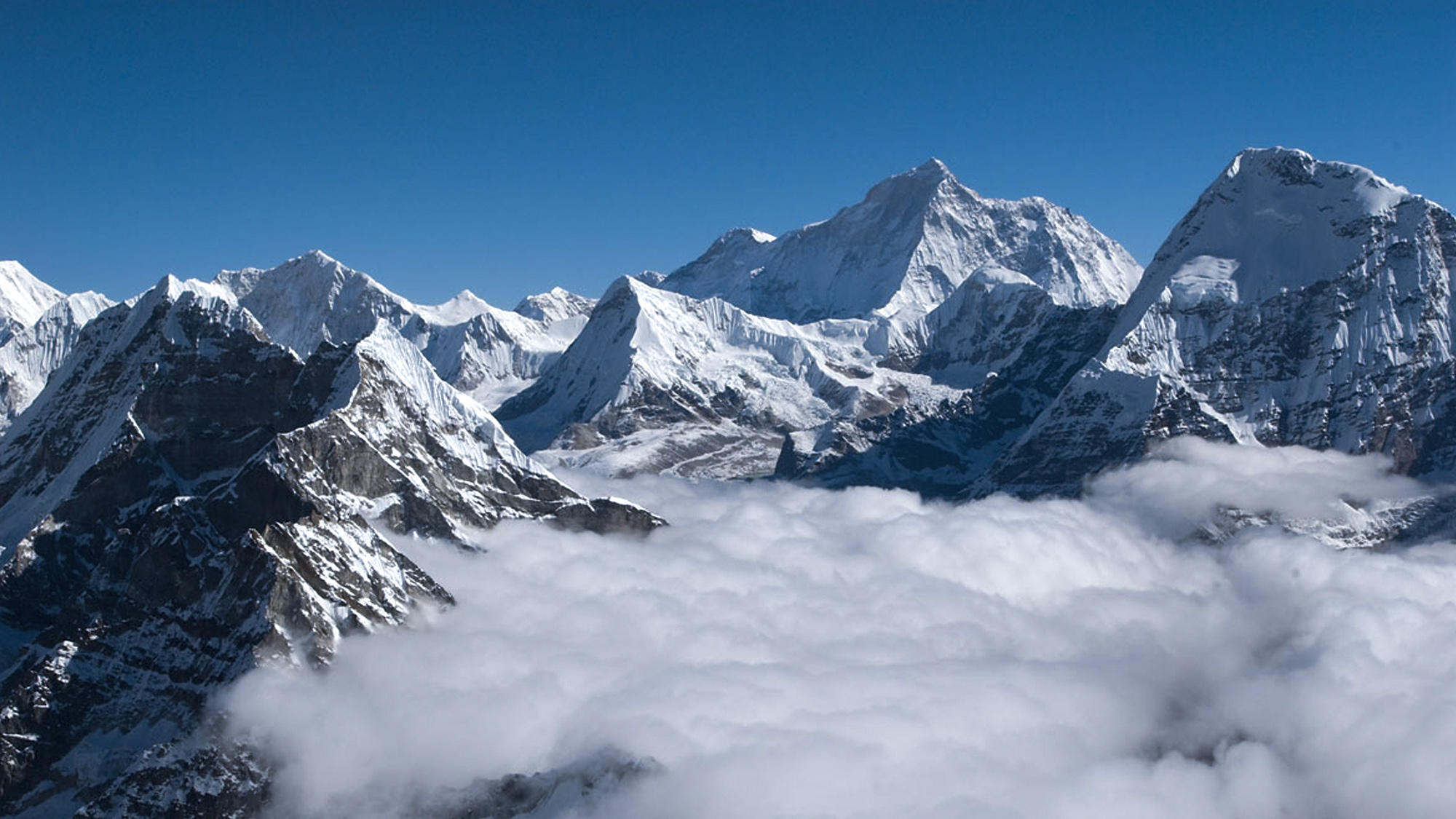
 Group Size: 1-15 PAX
Group Size: 1-15 PAX  Duration: 16 Days
Duration: 16 Days  Trip Start: Kathmandu
Trip Start: Kathmandu  Trip End: Kathmandu
Trip End: Kathmandu  Average Time per Day: 6hrs
Average Time per Day: 6hrs  Trip Grading: Challenging
Trip Grading: Challenging 


